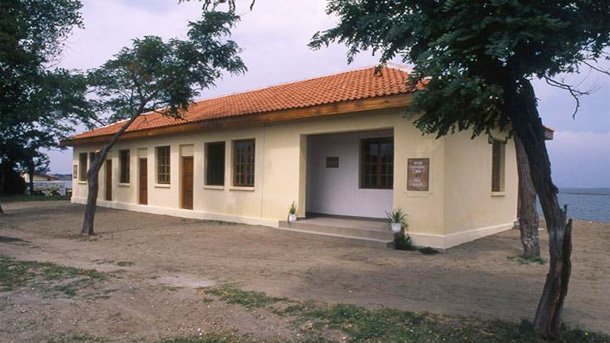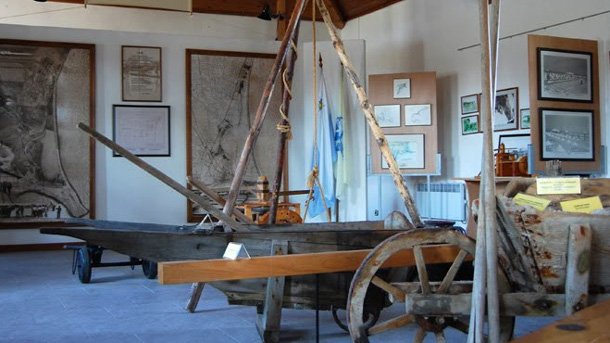In the past years, in almost every shop for dietetic food in Bulgaria one can find different kinds of salt from every part of the world – Himalayan, pink, red, blue, black, and gray kinds of salt. Still, there always has to be “white gold” which Bulgarians can’t go without on their table – the Pomorian salt traditionally obtained from the Black Sea. Experts say that thousands of years have passed since the extraction of this valued treasure has begun. The only Salt Museum in Bulgaria and Eastern Europe, located near the Black Sea resort town of Pomorie, welcomes guests from all around the world for 10 years now. For this period, about 50 000 tourists have had the opportunity to look at the interesting exhibits and see exactly where and how the white salt crystals are obtained. The idea for such a museum emerged in the late 1960s, but it opened in 2002. It was created with the financial assistance from the EU under the PHARE programme. A couple of years later, the Salt Museum entered the 100 national tourist sites list.

© Photo: pomorie.bedtime.bg
One of the curators there is Iliya Kusev, who introduced us to the most interesting items in the world of salt:
"The museum consists of two components”, Mr. Kusev says. “One of them is the exhibition hall where visitors can study the history of salt production in Pomorie. We have a rich photo archive and contemporary audio-visual exhibits. People can also see the devices and appliances that salt-workers have once used. During the summer months it is especially interesting to visit the open-air part of the Museum. At that time, visitors can observe the way of extracting sea salt in an ancient way which is typical of Pomorie. This is the only Museum in Eastern Europe that produces salt by evaporation of the sea water. This year, because of the 10th anniversary of the Salt Museum, the guests of Pomorie will have the possibility to attend a lot of interesting festive events. The final part of the celebrations will be in September when a scientific conference on the topic “The World of Salt” will be held,” Mr. Kusev explains.

© Photo: bulgarian-museum.blogspot.com
Young people and adults can take part in the sea feasts. An essay writing competition has already started on the subject “On the road of salt”. All the artists attracted by the sea waves are welcome. “The world is a sea” workshop will offer them a variety of topics related to salt, salt making and salterns in Pomorie.

© Photo: pomorie.bedtime.bg
The city of Pomorie, once called Anchialos, attracts more and more tourists. They arrive there not only for the beautiful beaches with a magnificent view of the horizon complemented by the white sails of small and big yachts during the sailing regattas; they also arrive for the opportunity to visit the Salt Museum, as well. The curious tourists can learn a lot here. In 2011, the municipality won a project called “Pomorie as a tourist attraction – the city of salt, ancient history and tradition”. This project includes construction and repair works in the area of the salterns. All of that will attract the attention of more guests and it will be easier for them to find their way in the area. The new information boards will be of help, as well. The Museum itself is located at the coast of the Pomorie Lake. Nowadays the salterns of the Museum produce salt in the same way as it was done in antiquity. The process of salt extraction consists of the passing of the sea water to the lake in several stages and in several special pools later. The evaporation that raises the concentration of the salt takes place there. Everything ends with the crystallization in the small salterns, whose sizes are about 80 to 100 square meters. Historians suppose that the salterns have existed even before the founding of the ancient city of Anchialos around 5th century BC. The intoxicating smell of the sea, the fresh coastal breeze and the atmosphere loaded with history are a great chance for a nice sea holiday combined with a new knowledge of the ancient way of salt extraction.
English version: Hristina Petcova
One of Bulgaria’s emblematic medieval fortresses rises close to Mezek village, six kilometers from Svilengrad and just one from the border with Greece. It was built at the end of the 11 th and the beginning of the 12 th century, probably during the..
In recent years the famous winter resort of Bansko in Mount Pirin has also been developing as a summer tourist location. There are fascinating museums here that are open all the year round, revealing different aspects of the town’s history..
There is a sacred place in the Balkan Mountain Range beloved by all Bulgarians. We are talking about the Shipka peak where the National Monument of Freedom was built. One of the most popular military monuments was built in honor of the Russian..

+359 2 9336 661
